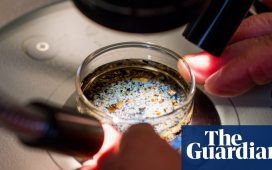Vaccines mark one of the most significant milestones in public health, having prevented morbidity and mortality for millions yearly. Traditionally, vaccine technology has focussed on live attenuated or inactivated, but nanotechnology has revolutionised the development in this field.
In this, lipid nanoparticle (LNP) technology has emerged as highly promising. Progress in medical science has facilitated the seamless integration of lipid nanotechnology into standard therapy, including developing several vaccines, which have yielded notable outcomes.
The recent COVID-19 vaccines based on mRNA-contained LNPs have propelled this ground-breaking technology from being seen as speculative research to transformative in genetic medicines and vaccines.
History of Lipid Nanotechnology
The inception of lipid nanotechnology dates back to 1965, when liposomes were first discovered. These closed lipid bilayer vesicles self-assemble in water, forming fatty capsules.
continued below
Their potential for drug delivery was immediately recognised due to their ability to encapsulate small-molecule drugs and enhance their aqueous solubilities—a critical advantage since over 40% of these agents have low solubility in water.
From this initial discovery, the technology has evolved, with continuous tweaks and refinements optimising the functionality of lipid nanoparticles, leading to the creation of highly versatile drug delivery platforms and liposomal drugs.
In general, nanomedicine involves applying nanoparticles and the utilisation of lipids from natural or synthetic sources in disease diagnosis, monitoring, control, and treatment. A significant advantage of this technology is the ability to customise lipid-based nanoparticles to surpass the constraints imposed by the human body’s natural biological barriers, systemic or cellular.
Lipid Nanotechnology in Vaccine Development
Introducing vaccines that utilise lipid nanotechnology has created a remarkably effective and innovative vaccine platform. LNPs are currently considered the most sophisticated non-viral gene delivery system in clinical use.
They are a secure and highly efficient method of transporting nucleic acids, successfully overcoming a significant challenge in developing and applying genetic medicines and vaccines.
Before the global spread of COVID-19, mRNA vaccines were still in the nascent stages of development within biotech companies, with LNP technology playing a pivotal role in these efforts. The success of the COVID-19 vaccines has clinically proven the modality of lipid-based nanoparticle delivery, demonstrating the possibilities for rapid design, development and manufacturing of other promising genomic medicines.
A key advantage of this technology is the ability to tailor lipid-based nanoparticles to overcome the inherent constraints posed by the human body’s natural biological systemic or cellular barriers. Given their modular characteristic, LNP excipients can be combined, adjusted and revised during formulation to enhance immune responses.
In the case of the COVID-19 vaccines, LNP has been the driving force behind developing sophisticated vaccine delivery systems. In the mRNA-based COVID-19 vaccine, the mRNA strand is coupled with an adjuvant (to stimulate the immune response), all encapsulated within the stable nanoliposome matrix. This mRNA encodes the critical protein of the SARS-CoV-2 virus. When the lipid nanoparticle is introduced into the body, it triggers the production of the spike protein, which attaches to the human cell membrane, acting as an antigen to provoke an immune response.
This primes the body’s defence system against potential infection. The LNPs then play a crucial role in maintaining the mRNA strand’s stability and protection throughout the delivery process, ultimately ensuring a more effective and heightened immunogenic response from the vaccine.
The effective use of LNP in COVID-19 mRNA vaccines has also sparked a renewed enthusiasm for applying this technology to combat other infectious diseases like malaria, tuberculosis (TB), and human immunodeficiency virus (HIV). Nanotechnology promises to revolutionise both the diagnosis and treatment of these diseases.
The adaptability of the technology means that treatments encapsulated in liposomes, polymer nanoparticles, and nano drug crystals can be administered locally or systemically, with sustained or immediate release. The potential for innovations is vast.
Nevertheless, the research focus on specific infectious diseases, such as HIV, has been more intensive than others, like malaria and TB. The lack of sufficient funding has historically hindered the progress of nanotechnologies in addressing these unmet medical needs. However, the situation could be on the verge of change.
Johns Hopkins University is reportedly developing a platform to streamline the production of lipid nanoparticles for gene medicine delivery, potentially making the process more cost-effective. This breakthrough technology is now being applied to develop a malaria vaccine that explicitly targets the disease-causing parasite during its lifecycle in the liver.
Another recent development is a group of scientists from the University of Toronto’s (U of T) Leslie Dan Faculty of Pharmacy uncovering a new ionisable lipid nanoparticle, which allows mRNA delivery to be primarily focused on muscle tissue while reducing the risk of off-target delivery to other tissues.
Known as iso-A11B5C1, this innovative lipid nanoparticle displays remarkable mRNA delivery efficacy within muscle tissue while simultaneously minimising unintended mRNA translation in organs like the liver and spleen. Moreover, the findings indicate that intramuscular administration of mRNA coupled with this nanoparticle formulation elicited strong cellular immune responses despite limited expression noted in lymph nodes.
Government must do more to support innovation
The future of lipid nanotechnology is promising, especially regarding vaccine development. Using this technology as a delivery vector for COVID-19 mRNA vaccines has opened up several new avenues for exploration. There are considerable breakthroughs to be made in cancer treatment, curing diabetes, targeting multiple sclerosis, thalassemia, and lifestyle diseases. To fully unlock the potential, the Government must look at future-oriented targeted therapies and new drug delivery systems by supporting companies working in futuristic technologies and therapies.
Introducing schemes and incentives for companies that manufacture lipid ingredients will ensure manufacturers get the support they need to develop this technology further and bring it to market. The allocation of funds for research and development of transformational technologies and novel drug delivery (NDDS), drugs and biologics delivery, targeted drug delivery, and nanotechnology-based therapeutics will open new opportunities for academia and industry.
Developing more versatile nanocarrier designs is anticipated to address existing and future medical needs. Governments and academia can play a crucial role in fostering further progress by providing regulatory support and incentives to companies for research in this field. Through combined efforts, advancements in lipid nanotechnology can be accelerated, leading to innovative solutions for healthcare challenges.
The article is written by Arun Kedia, Managing Director, VAV Lipids
(DISCLAIMER: The views expressed are solely of the author and ETHealthworld.com does not necessarily subscribe to it. ETHealthworld.com shall not be responsible for any damage caused to any person/organisation directly or indirectly)
Most Read in Industry
Join the community of 2M+ industry professionals
Subscribe to our newsletter to get latest insights & analysis.
Download ETHealthworld App
- Get Realtime updates
- Save your favourite articles











